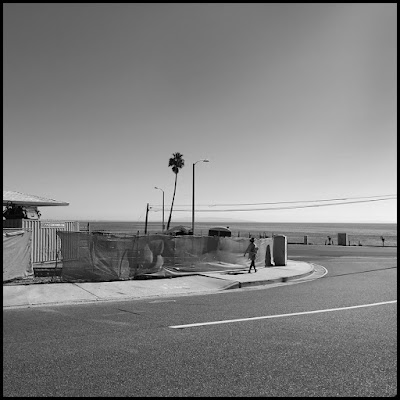 |
| ©tod papageorge |
I just finished reading Arthur Lubow's new biography on Diane Arbus. I regard Arbus as one of my leading influences.
Regarding influence, it's worthy to note, I don't consider the influence of an artist to imply that there physical body of work is what is most impactful. There are plenty of influences that share no resemblance to my own personal work, yet I can site them as having a profound impact on my life, and more importantly, my life as an photographer. This especially rings true with Diane Arbus' work.
What strikes me about Arbus, and is beautifully written in this book, is her emotional connection to her subjects, especially as it relates to her upperclass upbringing. In an Arbus photograph, something is revealed, and often times, it's Arbus who is reflected most prominently in the physical photograph. "This can be said about Robert Frank, who led the charge in redefining documentary photography as a path to self expression, but with Arbus, the connection between subject and photographer is transformative. There is a "nakedness" in her photographs that is other-worldly.
When I finished the book, I took out a few books from my collection of Arbus' contemporaries; photographers that are associated with the New Documents exhibit. What's abundantly clear, as I'm sure it was when the New Documents exhibit first opened at the MOMA in 1967, is how Arbus' work completely stands on it's own accord. While Winogrand and Friedlander were trailblazers in their own right, Diane Arbus is an anomaly.
The internet has further illuminated the chasm between Diane Arbus and her contemporaries. So much so, that most street photography looks passé now when you compare it to the work of Diane Arbus. If you browse the hashtag #streetphotography on Instagram, you will see millions of present-day photographers, trying their hardest to emulate the style of Robert Frank, Lee Friedlander and Garry Winogrand. Especially Garry Winogrand! Seldom do you see work that encapsulates what Arbus was doing in her lifetime. Bruce Gilden has tried, but with Gilden's work, there is an emotional dis-connect between him and his subjects. With Arbus, the bond between photographer and subject was quintessential to her process.
This is an exhausting and comprehensive biography, that reflects with great detail, the complexities and vulnerability of a great photographer. It's a worthwhile read if you can stomach the downward spiral of a conflicted artist who unravels with each ensuing chapter of this book.



















































